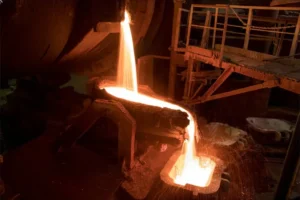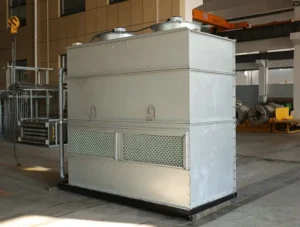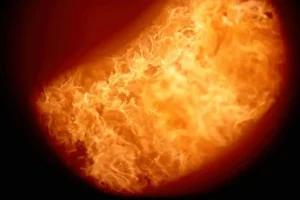เตาแบบเหนี่ยวนำไม่ใช่ Melter สากล, เปิดเผยข้อ จำกัด ด้วยวัสดุบางอย่าง.
ด้วยประสิทธิภาพสูง, ความสะอาด, และความแม่นยำ, เตาแบบเหนี่ยวนำมีบทบาทสำคัญในด้านการหลอมละลายและการแปรรูปโลหะ. อย่างไรก็ตาม, ไม่ใช่ “Universal Melter” หลักการทำงานโดยธรรมชาติสร้างข้อ จำกัด ที่สำคัญเมื่อจัดการวัสดุบางประเภท. บทความนี้จะเจาะลึกว่าทำไมเตาหลอมเหนี่ยวนำจึงไม่เหมาะสำหรับการละลายวัสดุที่ไม่ใช่โลหะโดยตรงด้วยการนำไฟฟ้าต่ำหรือโลหะระเหยสูง, และอธิบายความท้าทายพิเศษและมาตรการตอบโต้ที่จำเป็นเมื่อดำเนินการ.
การเหนี่ยวนำแม่เหล็กไฟฟ้าและเอฟเฟกต์จูล
เพื่อทำความเข้าใจข้อ จำกัด ของเตาหลอมเหนี่ยวนำ, ก่อนอื่นต้องเข้าใจหลักการการทำงานหลักของมัน. เตาแบบเหนี่ยวนำใช้ขดลวดทองแดงซึ่งผ่านกระแสสลับความถี่สูงจะถูกส่งผ่าน. สิ่งนี้สร้างพลังที่ทรงพลัง, สนามแม่เหล็กที่ผันผวน. เมื่อวัสดุนำไฟฟ้า (ค่าใช้จ่าย) อยู่ในฟิลด์นี้, ตามกฎการเหนี่ยวนำแม่เหล็กไฟฟ้าของฟาราเดย์, กระแสเหนี่ยวนำ, รู้จักกันในชื่อ “Eddy ปัจจุบัน,” ถูกสร้างขึ้นภายในวัสดุ.
ขณะที่ปัจจุบันไหลผ่านตัวนำ, ซึ่งมีความต้านทานไฟฟ้า, มันสร้างความร้อน. นี่คือ “เอฟเฟกต์ความร้อนจูล” (Q = i2⋅r⋅t). มันเป็นความร้อนที่สร้างขึ้นภายในซึ่งช่วยให้ประจุร้อนขึ้นและละลายอย่างรวดเร็ว. สำหรับวัสดุ ferromagnetic (เหมือนเหล็ก, โคบอลต์, และนิกเกิล), การสูญเสีย Hysteresis ยังช่วยให้ความร้อนต่ำกว่าอุณหภูมิคูรี, ปรับปรุงประสิทธิภาพเพิ่มเติม.
จากหลักการนี้, เป็นที่ชัดเจนว่า ประสิทธิภาพของการให้ความร้อนแบบเหนี่ยวนำนั้นเกี่ยวข้องโดยตรงกับการนำไฟฟ้าและการซึมผ่านของแม่เหล็กของวัสดุ. การหลอมละลายที่มีประสิทธิภาพสามารถทำได้หากวัสดุสามารถกระตุ้นกระแสวนที่แข็งแรงพอสมควรได้อย่างมีประสิทธิภาพ.
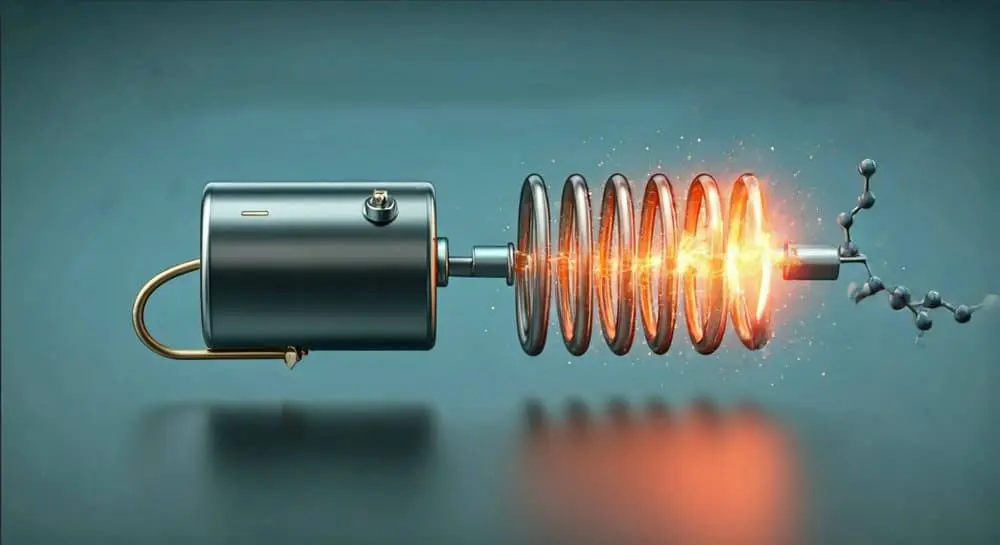
ข้อ จำกัด 1, ความท้าทายของการละลายวัสดุที่ไม่ใช่โลหะด้วยการนำไฟฟ้าต่ำ
สำหรับวัสดุที่ไม่ใช่โลหะที่มีการนำไฟฟ้าต่ำมาก, เช่นเซรามิกส์, กระจก, ทรายแห้ง, และออกไซด์บางอย่าง, ข้อ จำกัด ของเตาเหนี่ยวนำมีความโดดเด่นเป็นพิเศษ.
การให้เหตุผล
วัสดุเหล่านี้ขาดอิเล็กตรอนที่เคลื่อนไหวได้ฟรี, ให้ความต้านทานไฟฟ้าสูงมาก. เมื่อสนามแม่เหล็กสลับผ่านผ่านพวกเขา, พวกเขาไม่สามารถสร้างกระแสวนวนที่สำคัญใด ๆ ได้. เพราะเหตุนี้, เอฟเฟกต์ความร้อนของจูลนั้นเล็กน้อย, และวัสดุไม่สามารถให้ความร้อนโดยตรงไปยังจุดหลอมเหลวโดยการเหนี่ยวนำ. สิ่งนี้คล้ายคลึงกับการวางบล็อกไม้ไว้บนเตาเหนี่ยวนำ; ไม่ว่าพลังจะสูงแค่ไหน, ตัวเองจะไม่ร้อนขึ้น.
การจัดการและปัญหาพิเศษ
แม้ว่าจะไม่สามารถให้ความร้อนโดยตรงได้, อุตสาหกรรมพบวิธีแก้ปัญหาเพื่อละลายวัสดุที่ไม่ใช่โลหะโดยใช้เตาหลอมเหนี่ยวนำ. นี้, อย่างไรก็ตาม, ต้องใช้ตัวกลาง: ก สัปเหร่อ.
- มันทำงานอย่างไร: วัสดุที่ไม่ใช่โลหะจะถูกวางไว้ในเบ้าหลอมหรือภาชนะที่ทำจากวัสดุที่มีความเป็นตัวสูง, เช่นกราไฟท์, ซิลิกอนคาร์ไบด์, หรือโลหะที่มีความต้านทานอุณหภูมิสูงบางชนิด. คอนเทนเนอร์นี้ทำหน้าที่เป็นผู้อ่อนแอ. ขดลวดเหนี่ยวนำให้ความร้อนโดยตรงกับอุณหภูมิสูง, ซึ่งจะถ่ายโอนความร้อนไปยังวัสดุที่ไม่ใช่โลหะภายในผ่านผ่าน การนำและรังสี, จึงประสบความสำเร็จในการหลอมละลาย.
- ปัญหาที่เกิดขึ้น:
- ที่ได้ลดลง ประสิทธิภาพการใช้พลังงาน: ต้องถ่ายโอนความร้อน, นำไปสู่การสูญเสียความร้อนและทำให้กระบวนการโดยรวมประหยัดพลังงานน้อยกว่าความร้อนเหนี่ยวนำโดยตรง.
- การควบคุมอุณหภูมิลดลง ความแม่นยำ: ความร้อนดำเนินการจากภายนอกใน, การสร้างอุณหภูมิการไล่ระดับสีระหว่างภายนอกและภายในของวัสดุ. สิ่งนี้ทำให้การควบคุมอุณหภูมิที่แม่นยำของวัสดุที่ไม่ใช่โลหะนั้นยากขึ้น.
- ข้อกำหนดวัสดุที่เข้มงวด: ผู้ไว/เบ้าหลอมจะต้องทนต่ออุณหภูมิที่สูงมากและต้องไม่ทำปฏิกิริยาทางเคมีกับวัสดุที่ละลายเพื่อหลีกเลี่ยงการปนเปื้อนของผลิตภัณฑ์. ตัวอย่างเช่น, การละลายแก้วควอตซ์ที่มีความบริสุทธิ์สูงต้องการความบริสุทธิ์ที่สูงเป็นพิเศษ.
- ค่าใช้จ่ายที่เพิ่มขึ้น: ตรึงกางเขนที่มีคุณภาพสูงมีราคาแพงและมีอายุการใช้งานที่ จำกัด, ซึ่งเพิ่มต้นทุนการผลิต.
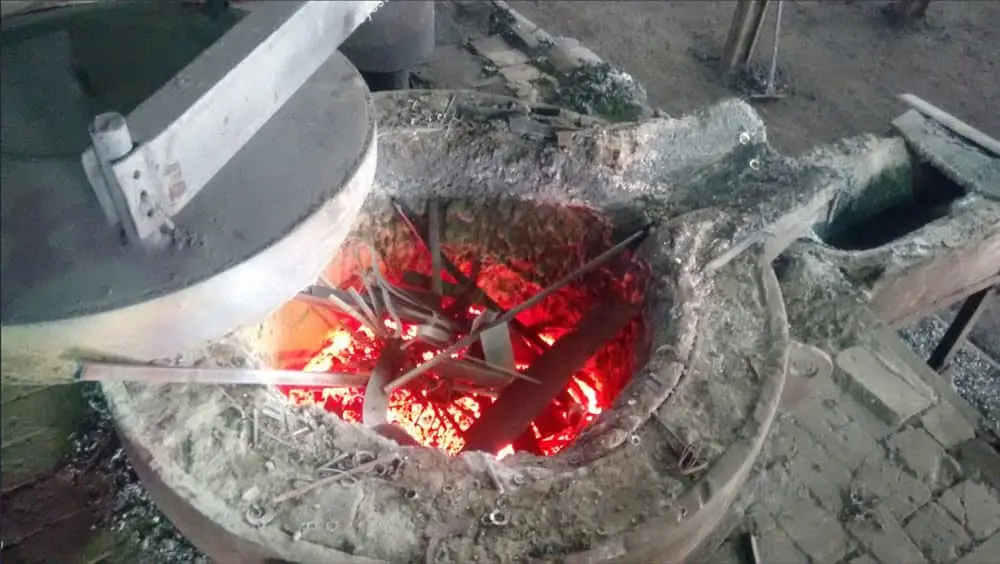
ข้อ จำกัด 2, ความยากลำบากในการละลายโลหะที่มีความผันผวนสูง
สำหรับโลหะเช่นสังกะสี, แมกนีเซียม, แคดเมียม, และโลหะผสมของพวกเขา (เช่นทองเหลือง), เตาเหนี่ยวนำยังเผชิญกับความท้าทายที่สำคัญ.
การให้เหตุผล
โลหะเหล่านี้มีลักษณะโดย จุดเดือดต่ำและแรงดันไอสูง ใกล้จุดหลอมเหลวของพวกเขา. ซึ่งหมายความว่าพวกมันระเหยได้ง่าย, สร้างไอโลหะ, ขณะที่พวกเขาละลายหรือแม้กระทั่งเข้าใกล้สถานะหลอมเหลว.
สองคุณสมบัติของเตาหลอมเหนี่ยวนำทำให้ปัญหานี้รุนแรงขึ้น:
- เอฟเฟกต์การกวนแม่เหล็กไฟฟ้า: ปฏิสัมพันธ์ระหว่างสนามแม่เหล็กสลับกับกระแสวนทำให้เกิดแรงกวนที่แข็งแกร่งภายในโลหะหลอมเหลว. ในขณะที่สิ่งนี้เป็นประโยชน์สำหรับองค์ประกอบและอุณหภูมิโลหะผสมที่เป็นเนื้อเดียวกัน, นอกจากนี้ยังเพิ่มพื้นที่ผิวของอ่างหลอมเหลวอย่างมาก, การเร่งการระเหยขององค์ประกอบแรงดันแรงดันสูง.
- ความร้อนสูงเกินไป: ความร้อนจากการเหนี่ยวนำจะเข้มข้นเป็นหลักในชั้นพื้นผิวของประจุ (เอฟเฟกต์ผิวหนัง). ซึ่งอาจทำให้อุณหภูมิท้องถิ่นสูงกว่าอุณหภูมิเฉลี่ยมาก, ทำให้การระเหยของโลหะระเหยรุนแรงขึ้นอีก.
การจัดการและปัญหาพิเศษ
เมื่อแปรรูปโลหะเหล่านี้, ต้องใช้มาตรการพิเศษเพื่อระงับการกลายเป็นไอ.
- หลัก ปัญหา:
- การสูญเสียโลหะอย่างรุนแรง: โลหะจำนวนมากสูญเสียไปในรูปของไอ, ซึ่งไม่เพียงแต่ทำให้วัตถุดิบสิ้นเปลือง แต่ยังทำให้องค์ประกอบสุดท้ายของโลหะผสมยากต่อการควบคุม. ตัวอย่างเช่น, การควบคุมการสูญเสียสังกะสีเมื่อหลอมทองเหลืองถือเป็นปัญหาที่ยุ่งยากมาก.
- สิ่งแวดล้อมและ ความปลอดภัย ความเสี่ยง: ควันโลหะที่ระเหยกลายเป็นไอ (เช่น ควันซิงค์ออกไซด์) ก่อให้เกิดมลพิษต่อสภาพแวดล้อมการประชุมเชิงปฏิบัติการและเป็นอันตรายต่อคนงาน’ สุขภาพ. ไอระเหยเช่นแมกนีเซียมสามารถติดไฟและระเบิดได้.
- ความเสียหายของอุปกรณ์: ไอระเหยของโลหะสามารถควบแน่นบนส่วนที่เย็นกว่าของเตาเผาได้, เช่นขดลวดเหนี่ยวนำหรือซับใน, ทำให้เกิดการลัดวงจรหรือการกัดกร่อนของอุปกรณ์.
- กลยุทธ์ตอบโต้:
- เครื่องดูดฝุ่น หรือการควบคุมบรรยากาศการหลอมละลาย: ละลายภายใต้สุญญากาศหรือในบรรยากาศก๊าซเฉื่อย (เหมือนอาร์กอน) สามารถลดอัตราการระเหยของโลหะได้อย่างมาก. นี่เป็นวิธีที่มีประสิทธิภาพที่สุดแต่ก็แพงที่สุดเช่นกัน. การหลอมเหนี่ยวนำสูญญากาศ (เป็นกลุ่ม) เตาเผาได้รับการออกแบบมาโดยเฉพาะสำหรับการใช้งานดังกล่าว.
- ฝาครอบฟลักซ์: การใช้ฟลักซ์หรือสารเคลือบพิเศษบนพื้นผิวของโลหะหลอมเหลวจะสร้างสิ่งกีดขวางทางกายภาพ, ลดการสัมผัสกับบรรยากาศของของเหลวและยับยั้งการระเหย.
- การควบคุมพลังงานและอุณหภูมิที่แม่นยำ: เพิ่มประสิทธิภาพกระบวนการหลอมเพื่อหลีกเลี่ยงความร้อนสูงเกินไปโดยไม่จำเป็น และลดเวลาที่โลหะใช้ในอุณหภูมิสูงให้เหลือน้อยที่สุด.
- การหลอมเหลวด้วยแรงดัน: การหลอมเหลวภายใต้ความดันที่สูงกว่าความดันบรรยากาศเล็กน้อยจะทำให้จุดเดือดของโลหะเพิ่มขึ้นได้อย่างมีประสิทธิภาพ, ระงับการกลายเป็นไอ. อย่างไรก็ตาม, ต้องใช้เตาเหนี่ยวนำแรงดันพิเศษ.
บทสรุป
เตาแบบเหนี่ยวนำเป็นเทคโนโลยีการหลอมละลายขั้นสูงอย่างไม่ต้องสงสัย, แต่หลักการทำงานที่เลือกได้หมายความว่ามันไม่สามารถทำทุกอย่างได้. สำหรับ วัสดุที่ไม่ใช่โลหะ ด้วยการนำไฟฟ้าต่ำ, มันไม่สามารถใช้พลังงานได้โดยตรงและต้องพึ่งพาความร้อนทางอ้อมของผู้อ่อนแอ, เสียสละประสิทธิภาพและความแม่นยำ. เมื่อต้องเผชิญกับ โลหะที่มีความผันผวนสูง, การกวนแม่เหล็กไฟฟ้าที่ทรงพลังของมันกลายเป็นดาบสองคม, การสูญเสียโลหะและความเสี่ยงที่รุนแรงขึ้น, จำเป็นต้องมีระบบเสริมที่ซับซ้อนและมีราคาแพงเช่นสูญญากาศหรือบรรยากาศที่ควบคุมได้.
ดังนั้น, เมื่อเลือกเทคโนโลยีการหลอมละลาย, ต้องพิจารณาคุณสมบัติทางเคมีกายภาพของวัสดุอย่างเต็มที่. โดยการทำความเข้าใจหลักการและข้อ จำกัด ของเตาหลอมที่แตกต่างกันอย่างลึกซึ้งเท่านั้นเท่านั้น, คุ้มค่า, และโซลูชั่นที่มีประสิทธิภาพสำหรับความต้องการวัสดุและการผลิตเฉพาะ.




